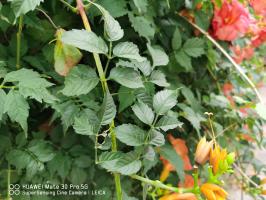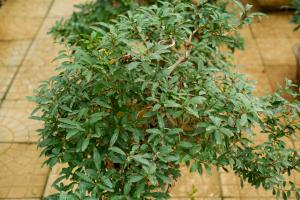What to Use Under Plant Pots
Having plants in our homes and gardens is an excellent way to bring some much-needed freshness and greenery into our lives. Whether you are a seasoned gardener, or just starting out, it’s important to know what to use under plant pots to ensure their health and longevity. In this article, we’ll explore some of the most popular options and discuss the pros and cons of each.
1. Saucers
Saucers are a popular option for placing under plant pots as they are simple to use and readily available. They are typically made of ceramic or plastic, and come in a variety of sizes and shapes to fit your plant pots. Saucers are ideal for indoor plants as they prevent water from spilling onto furniture and floors. However, they may not be the best choice for outdoor plants as they can become clogged with soil and debris, preventing excess water from draining away.
2. Gravel
Using a layer of gravel under your plant pots is a great way to improve drainage and prevent root rot. Gravel helps to create air pockets in the soil, allowing excess water to drain freely. It is also beneficial for plants that prefer well-drained soil, such as succulents and cacti. However, it’s important to note that gravel can be heavy and difficult to move, so it may not be the best option for larger pots.
3. Peat Moss
Peat moss is a popular choice for use under plant pots as it helps to retain moisture in the soil while also improving drainage. It is an organic material that is derived from decomposed plants, and it’s commonly used for seed starting and transplanting. Peat moss is also lightweight and easy to handle, making it a popular choice for indoor and outdoor plants. However, it’s important to note that peat moss is not sustainable and can have a negative impact on the environment if it’s harvested unsustainably.
4. Coco Coir
Coco coir is a relatively new option for use under plant pots. It is a by-product of coconut processing and is an environmentally sustainable alternative to peat moss. Coco coir is lightweight, has excellent water retention, and promotes healthy root growth. It is also pH neutral and free of pollutants, which makes it an excellent choice for organic gardening. However, it can be more expensive than other options and may not be readily available in all areas.
5. Mulch
Mulch is another popular option for use under plant pots as it helps to conserve soil moisture, suppress weed growth, and regulate soil temperature. It’s also beneficial for plants as it helps to enrich soil with nutrients as it decomposes. Mulch can be made from a variety of materials such as bark, leaves, and straw, and it’s easily available at most garden centers. However, it’s important to note that some types of mulch can be toxic to plants, so it’s important to choose the right type for your needs.
Conclusion
Choosing the right material to use under plant pots is an essential part of caring for your plants. Each of the options outlined above has its own set of benefits and drawbacks, so it’s important to choose the one that best meets your specific needs. Whether you opt for a saucer, gravel, peat moss, coco coir, or mulch, you can rest assured that you are taking the necessary steps to ensure the health and longevity of your plants.

 how many times do yo...
how many times do yo... how many planted tre...
how many planted tre... how many pine trees ...
how many pine trees ... how many pecan trees...
how many pecan trees... how many plants comp...
how many plants comp... how many plants can ...
how many plants can ... how many plants and ...
how many plants and ... how many pepper plan...
how many pepper plan...





























